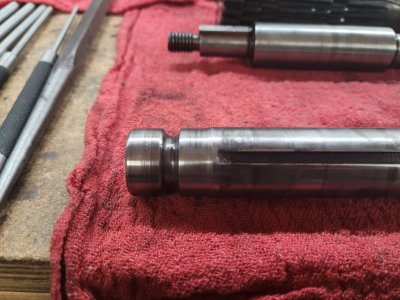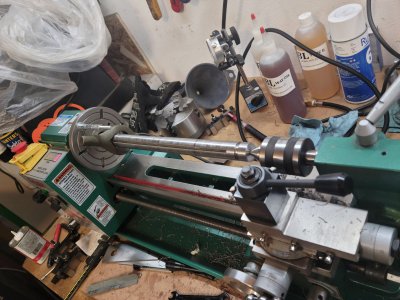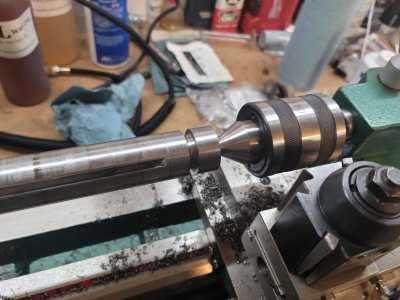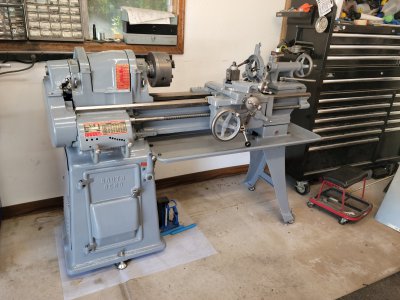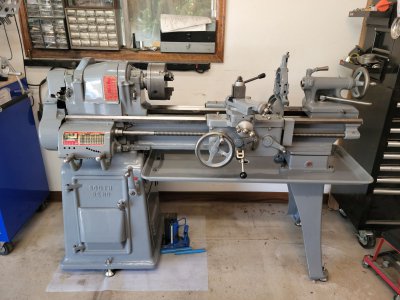I like this idea. I will probably go this route once I get done working through the rest of the machine and am ready for final assembly. I really don't like the excess play and the shaft sliding back and forth. I know eventually it will end up driving my nuts and I'll end up fixing it anyway.Second is to tap that hole for whatever size set screw that would fit and file a flat on the shaft. Either would work just fine, they only differ in the tools needed.
Working on the gearbox now and already seeing some tell-tale signs of crude attempts of dismantle. Pry bar marks on the faces of the external gears and remnants of a destroyed tension pin replaced with a much shorter dowel pin. The promising thing is, that appears to be as far as they got as the taper pins on the gear shafts looked factory like they had never been driven out and the brass bearings look to be in good shape. Oh and plenty of oil all over everything.

